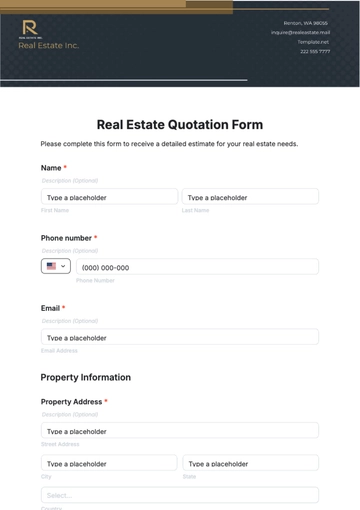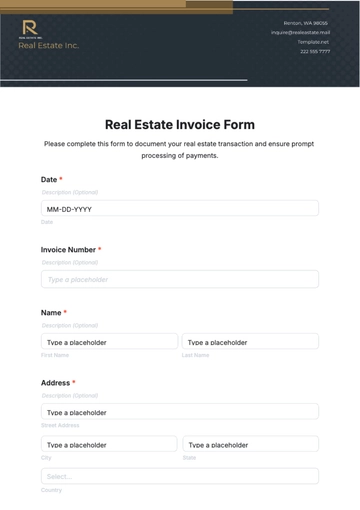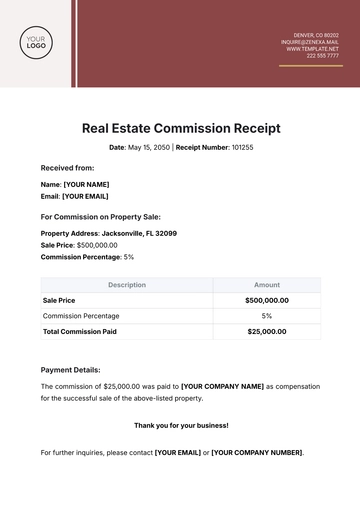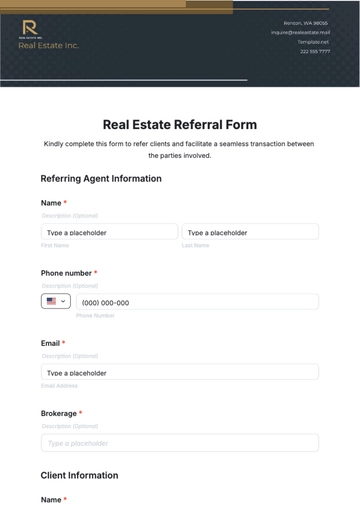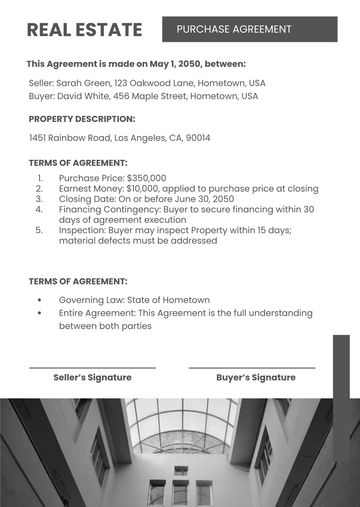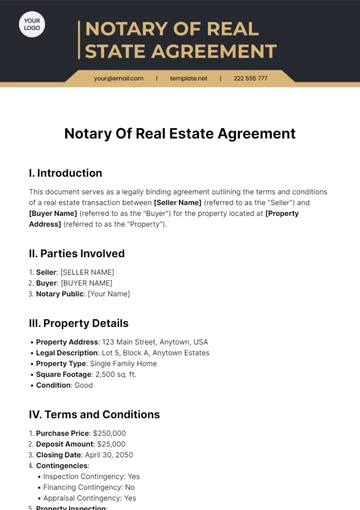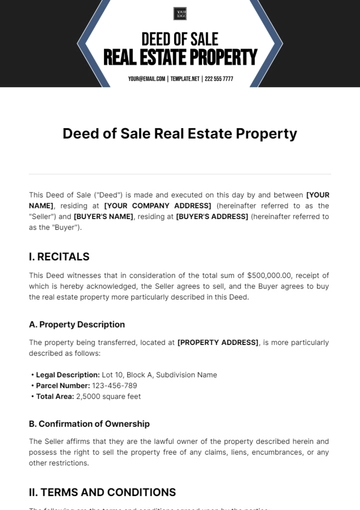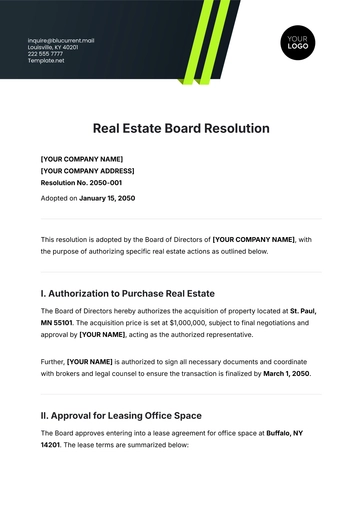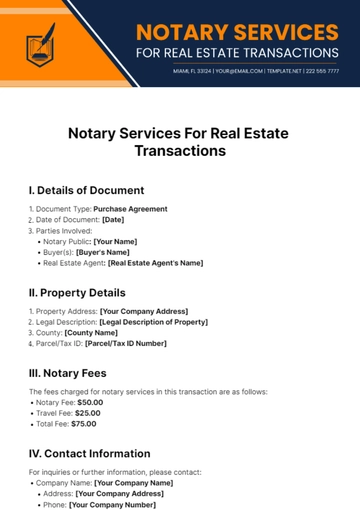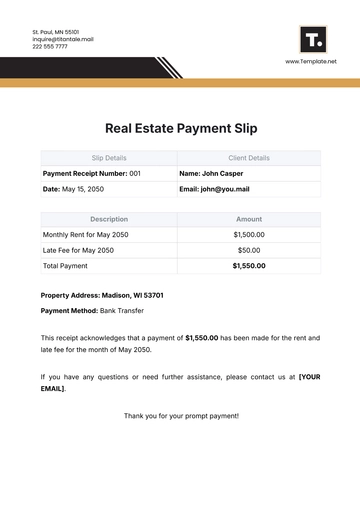Free Real Estate Buyer Persona Development Guide

I. Introduction
Purpose of Buyer Personas
In the competitive landscape of real estate marketing, understanding the nuanced needs, preferences, and motivations of potential buyers is imperative for success. Buyer personas serve as invaluable tools that allow real estate professionals to tailor their strategies and offerings to resonate with specific segments of the market. By humanizing target audiences and providing insights into their behaviors, personas empower marketers to craft more personalized and compelling messaging, ultimately leading to higher conversion rates and client satisfaction.
Importance of Persona Development
Developing comprehensive buyer personas lays the groundwork for strategic decision-making across all facets of the real estate business, from property development and marketing to sales and customer service. With buyer personas in hand, real estate professionals can better anticipate and address the needs and pain points of their target buyers, leading to more effective communication, stronger client relationships, and increased sales opportunities.
II. Getting Started
Defining Objectives
Before embarking on the journey of persona development, it's essential to establish clear objectives aligned with broader business goals. Whether the aim is to target a specific demographic segment, optimize marketing campaigns, or improve client engagement, articulating these objectives upfront provides direction and focus throughout the process.
Identifying Target Segments
Real estate markets are diverse and multifaceted, comprising various segments with unique needs and preferences. By identifying and prioritizing specific target segments—such as first-time homebuyers, luxury property investors, or empty nesters—real estate professionals can tailor their persona development efforts to address the most pressing needs and opportunities within their market.
Allocating Resources
Persona development requires time, effort, and resources to conduct thorough research, analyze data, and craft detailed profiles. Allocating sufficient resources, including personnel, budget, and technology tools, ensures that the persona development process is executed effectively and yields actionable insights that drive business outcomes.
III. Research Methodology
Primary Research
Primary research involves collecting firsthand data directly from target buyers through surveys, interviews, focus groups, or observational studies. These methods provide rich qualitative insights into buyer behaviors, preferences, and pain points, allowing real estate professionals to gain a deeper understanding of their target audience's motivations and decision-making processes.
Secondary Research
Secondary research involves gathering existing data from sources such as market reports, industry publications, government statistics, and academic research. This secondary data serves as a valuable supplement to primary research, providing context, trends, and benchmarks that enrich the understanding of the real estate market landscape and buyer demographics.
Data Analytics
Data analytics plays a crucial role in extracting meaningful patterns and insights from the vast amounts of data available to real estate professionals. Through advanced analytics techniques such as segmentation analysis, predictive modeling, and sentiment analysis, real estate marketers can uncover hidden correlations, trends, and opportunities that inform persona development and strategic decision-making.
IV. Demographic Profile
Age and Gender
Understanding the age and gender demographics of target buyers provides foundational insights into their life stages, preferences, and purchasing power. Whether targeting millennials seeking starter homes, affluent baby boomers downsizing for retirement, or dual-income couples investing in vacation properties, demographic data informs persona development and segmentation strategies.
Income and Occupation
Income level and occupation influence buyers' affordability, lifestyle preferences, and investment goals. By segmenting buyers based on income brackets and occupational categories—such as white-collar professionals, entrepreneurs, or retirees—real estate professionals can tailor their offerings and marketing messages to resonate with the financial and aspirational aspirations of their target audience.
Marital Status and Family Size
Marital status and family size impact buyers' housing needs, spatial requirements, and community preferences. Whether targeting singles seeking urban condos, growing families in need of suburban homes, or empty nesters downsizing to maintenance-free properties, understanding familial dynamics and household compositions informs property development and marketing strategies.
V. Psychographic Details
Lifestyle and Interests
Buyers' lifestyles and interests encompass a wide range of personal preferences, hobbies, and leisure activities that shape their housing choices and neighborhood preferences. Whether prioritizing outdoor recreation, cultural experiences, or social amenities, real estate professionals can tailor their offerings and community amenities to align with the lifestyle preferences of their target buyers.
Values and Attitudes
Buyers' values and attitudes reflect their core beliefs, priorities, and worldview, influencing their preferences for property features, sustainability practices, and community engagement. Whether emphasizing environmental stewardship, inclusivity, or convenience, real estate professionals can differentiate their offerings and messaging by aligning with the values and attitudes of their target audience.
Concerns and Preferences
Buyers' concerns and preferences encompass a myriad of factors that influence their decision-making process, from affordability and financing options to location, property features, and future growth potential. By addressing common concerns such as market volatility, property maintenance, or neighborhood safety, real estate professionals can build trust and confidence with their target audience and mitigate barriers to purchase.
VI. Goals and Challenges
Homeownership Aspirations
For many buyers, homeownership represents a significant milestone and long-term investment in their financial future and personal well-being. Whether seeking stability, security, or a sense of pride and accomplishment, understanding buyers' aspirations for homeownership informs property development, marketing, and sales strategies that resonate with their dreams and aspirations.
Affordability Constraints
Affordability constraints pose a significant challenge for many buyers, particularly in markets with high housing costs and limited inventory. Whether grappling with rising home prices, stringent lending requirements, or competing financial priorities, real estate professionals can address affordability concerns through innovative financing solutions, affordable housing initiatives, or value-added incentives that make homeownership more accessible and attainable.
Location Preferences
Location preferences play a critical role in buyers' housing decisions, influenced by factors such as proximity to work, schools, amenities, transportation hubs, and lifestyle attractions. Whether seeking urban convenience, suburban tranquility, or rural retreats, real estate professionals can cater to diverse location preferences by offering a range of properties in desirable neighborhoods that meet buyers' lifestyle and investment objectives.
VII. Buying Motivations
Stability and Security
For many buyers, real estate represents a tangible asset and a source of stability and security in an uncertain world. Whether seeking a primary residence, rental property, or investment portfolio diversification, buyers are motivated by the potential for long-term appreciation, rental income, and wealth preservation that real estate offers as an asset class.
Wealth Accumulation
Real estate investment presents opportunities for wealth accumulation and financial growth through property appreciation, rental income, and tax benefits. Whether pursuing passive income streams, capital appreciation, or portfolio diversification, investors are motivated by the potential for superior risk-adjusted returns and wealth generation that real estate investments offer over the long term.
Lifestyle Enhancement
Beyond financial considerations, real estate purchases are often driven by lifestyle considerations and personal aspirations for comfort, convenience, and fulfillment. Whether seeking a dream home, vacation retreat, or retirement sanctuary, buyers are motivated by the promise of enhanced quality of life, personal satisfaction, and fulfillment that real estate ownership affords.
VIII. Decision-Making Process
Research and Discovery
The buyer's journey begins with research and discovery, as buyers explore available options, gather information, and evaluate potential properties. Whether browsing online listings, attending open houses, or consulting with real estate professionals, buyers leverage various channels and information sources to educate themselves and narrow down their choices.
Evaluation and Comparison
Once buyers have identified potential properties, they enter the evaluation and comparison stage. Here, they assess each option based on criteria such as location, price, size, amenities, and investment potential. Real estate professionals can facilitate this process by providing comprehensive property information, conducting property tours, and offering comparative market analyses to help buyers make informed decisions.
Negotiation and Offer
After selecting a preferred property, buyers engage in negotiation and submit an offer to the seller. This stage involves discussions on price, terms, and conditions, with real estate professionals serving as intermediaries to facilitate communication and reach mutually agreeable agreements. By understanding buyers' preferences and priorities, agents can advocate for their clients' best interests and negotiate favorable outcomes.
Due Diligence and Closing
Upon acceptance of an offer, buyers conduct due diligence to verify property condition, title status, and legal compliance. Real estate professionals play a crucial role in coordinating inspections, addressing contingencies, and navigating the closing process to ensure a smooth and timely transaction. By guiding buyers through each step and addressing any concerns or issues that arise, agents instill confidence and trust in the transaction process.
IX. Communication Preferences
Digital Channels
Many buyers prefer to receive information and communicate through digital channels such as email, social media, and online listings. Real estate professionals can leverage these platforms to provide property updates, share market insights, and engage with clients in real-time conversations. By adopting a multichannel approach and tailoring content to suit digital preferences, agents can enhance visibility, accessibility, and engagement with their target audience.
Traditional Methods
Despite the rise of digital communication, some buyers still prefer traditional methods such as phone calls, in-person meetings, and printed materials. Real estate professionals should accommodate these preferences by offering personalized communication options and providing offline resources such as brochures, flyers, and direct mail campaigns. By offering a seamless omnichannel experience, agents can cater to diverse communication preferences and build stronger relationships with clients.
Timing and Frequency
Understanding buyers' preferences for timing and frequency of communication is essential for maintaining engagement and responsiveness. Some buyers may prefer regular updates and proactive communication, while others may prefer more sporadic contact and minimal interruptions. Real estate professionals should respect these preferences and tailor communication cadence and timing to align with buyers' schedules and preferences, ensuring a positive and respectful client experience.
X. Common Objections
Property Features
Buyers may raise objections related to property features such as layout, design, condition, or functionality. Real estate professionals can address these objections by highlighting unique selling points, offering alternative solutions, or providing incentives to sweeten the deal. By actively listening to buyers' concerns and offering solutions that meet their needs, agents can overcome objections and move the transaction forward.
Pricing and Affordability
Pricing and affordability concerns are common objections raised by buyers, especially in competitive markets or during negotiations. Real estate professionals can address these objections by providing market analysis, comparable sales data, and financing options to demonstrate value and affordability. By transparently communicating pricing rationale and offering flexible financing solutions, agents can alleviate buyers' concerns and facilitate successful transactions.
Location and Neighborhood
Buyers may express reservations about property location, neighborhood amenities, or community attributes. Real estate professionals can address these objections by showcasing local attractions, amenities, schools, and transportation options that enhance quality of life and meet buyers' lifestyle preferences. By painting a compelling picture of the neighborhood's value proposition and addressing concerns proactively, agents can overcome location-related objections and instill confidence in buyers' decision-making.
XI. Persona Development
A. Persona Name: Sarah the Urban Professional
Demographics: Age 30-35, Female, Income $80,000/year, Occupation: Marketing Manager, Single
Psychographics: Values work-life balance, enjoys dining out and attending cultural events, values sustainability
Goals and Challenges: Aspires to own a modern condominium in a vibrant urban neighborhood but struggles with affordability and finding the right property.
Buying Motivations: Seeks a property that reflects her urban lifestyle and offers convenience, amenities, and a sense of community.
Communication Preferences: Prefers email and social media for property updates and prefers to schedule property viewings after work hours.
B. Persona Name: David and Emily the Young Family
Demographics: Age 35-40, Married, Income $120,000/year combined, Occupations: Software Engineer and Teacher, with two young children
Psychographics: Values family-friendly neighborhoods, prioritizes school quality and outdoor recreation, seeks a sense of community
Goals and Challenges: Aspires to purchase a spacious single-family home with good schools and nearby parks but faces budget constraints and limited inventory.
Buying Motivations: Seeks a property that accommodates their growing family's needs and provides a safe and nurturing environment for their children.
Communication Preferences: Prefers phone calls and in-person meetings for personalized guidance and advice, with occasional email updates and property listings.
XII. Use Cases and Scenarios
Sarah's Property Search Journey
Sarah, the Urban Professional, begins her property search by browsing online listings and attending open houses in her preferred neighborhoods. She values modern design, eco-friendly features, and proximity to dining and entertainment options. After viewing several properties and consulting with her real estate agent, she finds her dream condominium and negotiates a competitive offer.
David and Emily's Home Buying Experience
David and Emily, the Young Family, embark on their homebuying journey with a focus on finding a spacious single-family home in a family-friendly neighborhood with good schools and parks. After touring several properties and evaluating their options, they submit an offer on a property that meets their criteria. Their real estate agent assists them throughout the due diligence process and coordinates a smooth closing, ensuring a seamless transition for their family.
XIII. Implementation Strategies
Targeted Marketing Campaigns
Utilize buyer personas to develop targeted marketing campaigns tailored to the unique needs and preferences of each segment. Craft personalized messaging, design compelling visuals, and select appropriate channels to reach and engage target buyers effectively. By aligning marketing efforts with buyer personas, real estate professionals can enhance campaign performance and drive higher conversion rates.
Client Relationship Management
Integrate buyer personas into client relationship management strategies to deliver personalized experiences and build stronger connections with clients. Anticipate clients' needs, preferences, and communication styles based on their persona profiles, and tailor interactions and service offerings accordingly. By demonstrating empathy, understanding, and attentiveness, agents can foster trust and loyalty with their clients and drive repeat business and referrals.
Sales Enablement Tools
Leverage buyer personas to develop sales enablement tools such as buyer guides, property tours, and presentation materials that resonate with target buyers. Equip agents with the resources and insights they need to effectively communicate property value propositions, address buyer objections, and guide clients through the transaction process. By providing agents with the tools and knowledge they need to succeed, real estate professionals can empower them to deliver exceptional service and drive business results.
XIV. Evaluation and Iteration
Performance Metrics
Establish metrics and KPIs for evaluating the effectiveness of buyer personas in driving sales and marketing outcomes. Track key performance indicators such as lead conversion rates, client satisfaction scores, and sales revenue attributed to persona-based marketing initiatives to gauge the impact and ROI of persona development efforts.
Continuous Improvement
Regularly review and update buyer personas based on feedback from real estate agents, clients, and market trends. Incorporate new data, insights, and observations into persona refinement efforts to ensure that personas remain relevant, accurate, and actionable in guiding decision-making and driving business results.
XV. Conclusion
Summary of Benefits
In conclusion, developing detailed buyer personas is a strategic imperative for real estate professionals seeking to understand and engage with their target audience effectively. By capturing the diverse needs, preferences, and motivations of buyers through personas, real estate professionals can tailor their marketing, sales, and client engagement strategies to deliver more personalized and compelling experiences that drive success in a competitive market landscape.
Call to Action
We encourage real estate professionals to leverage the insights and guidance provided in this Buyer Persona Development Guide to embark on their persona development journey. By investing in the creation and refinement of buyer personas, real estate professionals can unlock new opportunities for growth, differentiation, and client satisfaction, positioning themselves for success in an ever-evolving real estate market.
- 100% Customizable, free editor
- Access 1 Million+ Templates, photo’s & graphics
- Download or share as a template
- Click and replace photos, graphics, text, backgrounds
- Resize, crop, AI write & more
- Access advanced editor
Discover the ultimate Real Estate Buyer Persona Development Guide Template on Template.net! Crafted for real estate professionals, this editable and customizable template simplifies persona creation. Powered by an AI Editor Tool, it streamlines research methodology, demography profiling, and psychographic insights. Elevate your marketing game with this comprehensive guide, tailored to your target segments.

